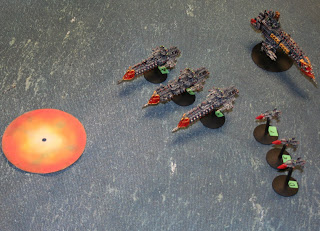 |
| A French battalion tucked into its movement tray. |
I've always liked movement trays. They can really cut down the time it takes to set up a game as units can come right out of the cabinet ready to play, they allow players to quickly, easily (and safely) move units around the table, and it speeds up the cleanup time as they go right back into the cabinet ready for the next battle. I asked Sylvain if he could make me up some movement trays for my Napoleonics and so he made me a shed load of these out of simple heavy card.
 |
| 240mm x 60mm raw card tray. |
The way we have based our Napoleonics is that a standard sized battalion in line has the same frontage as a standard sized regiment of cavalry in double line of squadrons (240mm) so this way we can pretty much use the same movement tray system for each troop type.
 |
| Battalion in Line in a single tray. |
 |
| Two trays accommodate a Dragoon Regiment in Double Line. |
I used acrylic Liquitex Gel to seal up the perimeter joins and give the edges some texture so the trays were easy for players to grip.
 |
| Edges applied with Liquitex gel medium. |
Once the gel dried, I sprayed the trays with Krylon Olive Green. I then used inexpensive Americana craft paint to drybrush the edges the same colour tones as my figures' bases.
I wanted to get away from using flocking on the movement tray edges as they often come off on player's fingers so I opted to use Woodland Scenics green undertone emulsion to give the impression of turf and for the bases to better blend-in with the surface of the table.
There you have it! Simple movement trays for your troops that are as cheap as chips.
 |
| The Boys all trayed-up and ready to water their horses in the Danube (or the Dnieper, or the Sambre, or...) |
I think I'll do up trays for Attack Columns and perhaps Squares next...

























 '
'







